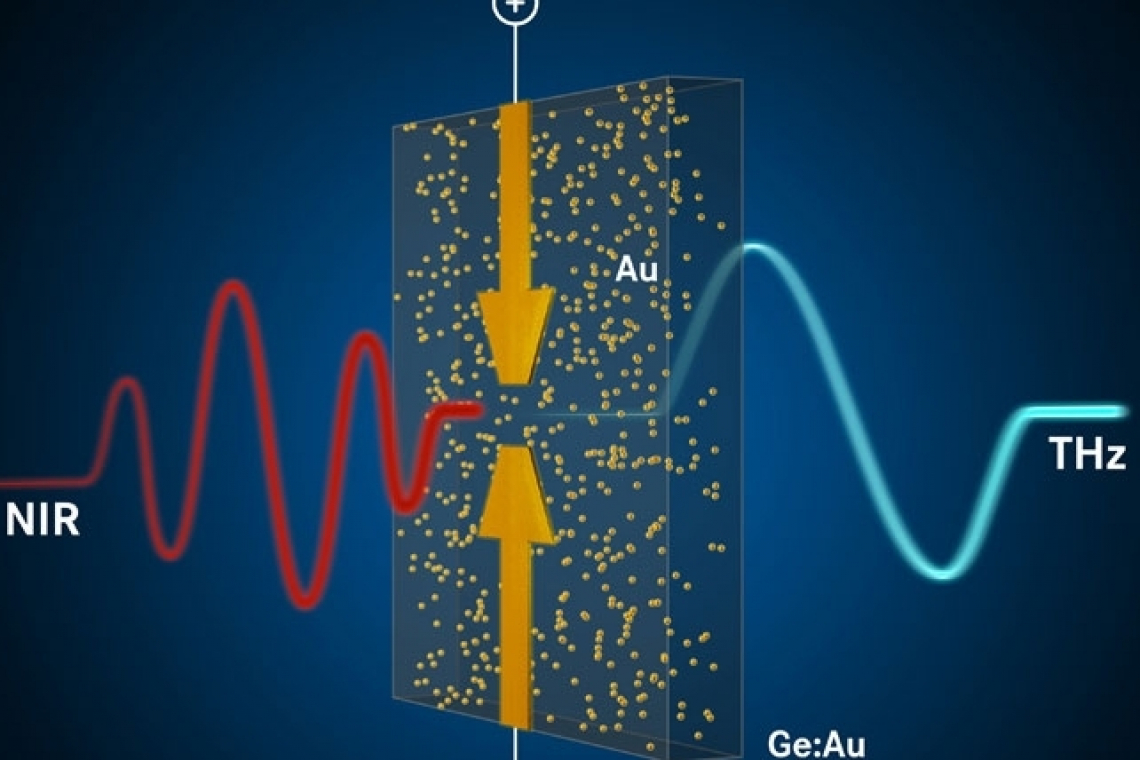Terahertz waves are becoming increasingly important for science and technology. However, generating these waves is still a challenge. A team from the Helmholtz-Zentrum Dresden-Rossendorf (HZDR), TU Dresden and the University of Konstanz has now made significant progress. They have developed a gold-spiked germanium component that generates short terahertz pulses with an advantageous property: the pulses are extremely "broadband", i.e. they deliver many different terahertz frequencies at the same time.
One of the currently established methods for generating terahertz waves is based on irradiating a crystal of gallium arsenide with ultrashort laser pulses, but it has various disadvantages. The research team therefore relies on another material, the semiconductor germanium. However, if pure germanium is irradiated with a short laser pulse, it takes several microseconds for the electrical charge in the semiconductor to dissipate. Only then can the crystal absorb the next laser pulse. However, today's lasers can fire their pulses at intervals of a few dozen nanoseconds, a sequence of shots that is far too fast for germanium. To overcome this difficulty, the experts looked for a trick that would allow the electrical charges in the germanium to be broken down more quickly. The solution was found in the precious metal gold. An ion accelerator is used to shoot gold atoms into a germanium crystal, causing the gold to penetrate up to 100 nanometers deep into the crystal. The crystal is then heated to 900 degrees Celsius for several hours, which causes the gold atoms to be evenly distributed in the germanium crystal.
The success was demonstrated when the team illuminated the gold-spiked germanium with ultrashort laser pulses: instead of ghosting around in the crystal for several microseconds, the electrical charge carriers disappeared again after just under two nanoseconds, around a thousand times faster than before. Figuratively speaking, the gold acted as a trap that captures and helps neutralize charges. As a result, the germanium crystal can now be bombarded with laser pulses at a high repetition rate, and it still works.
The new method enables terahertz pulses with an extremely wide bandwidth: instead of 7 terahertz as with the established gallium arsenide technology, it is now ten times higher - 70 terahertz. A broad and complete spectrum is obtained in one fell swoop. In principle, the germanium components can be processed using the same technology that is used to manufacture microchips. The gold-doped germanium is suitable for numerous applications in basic research, medicine or environmental technology (sensor technology).
www.hzdr.de


